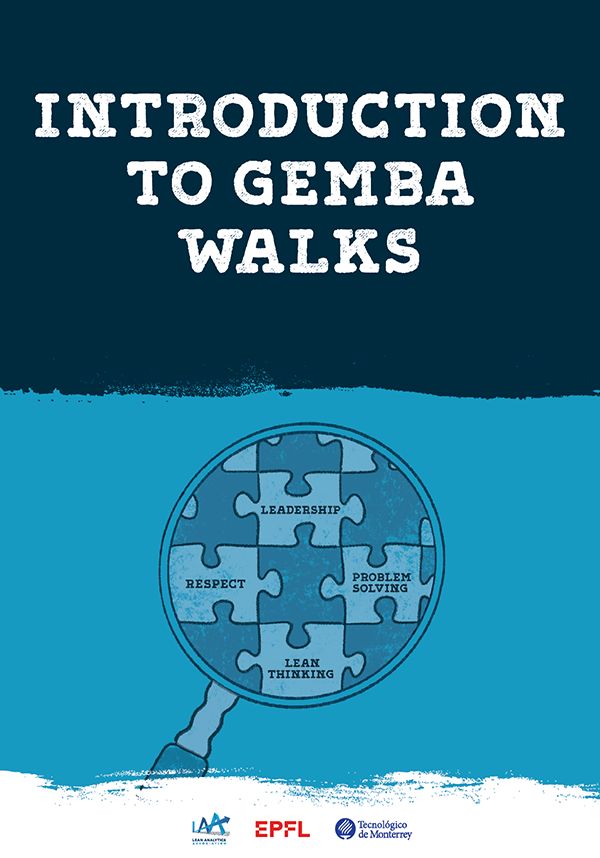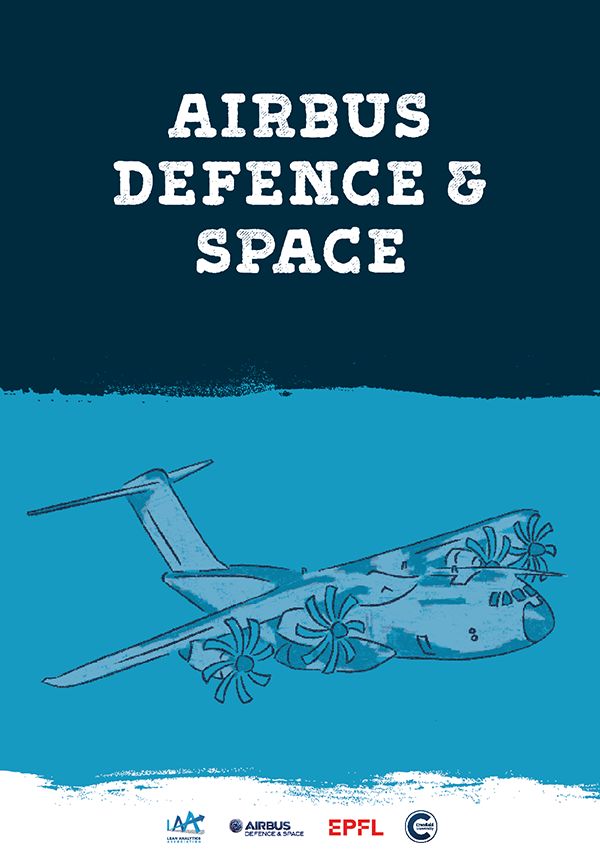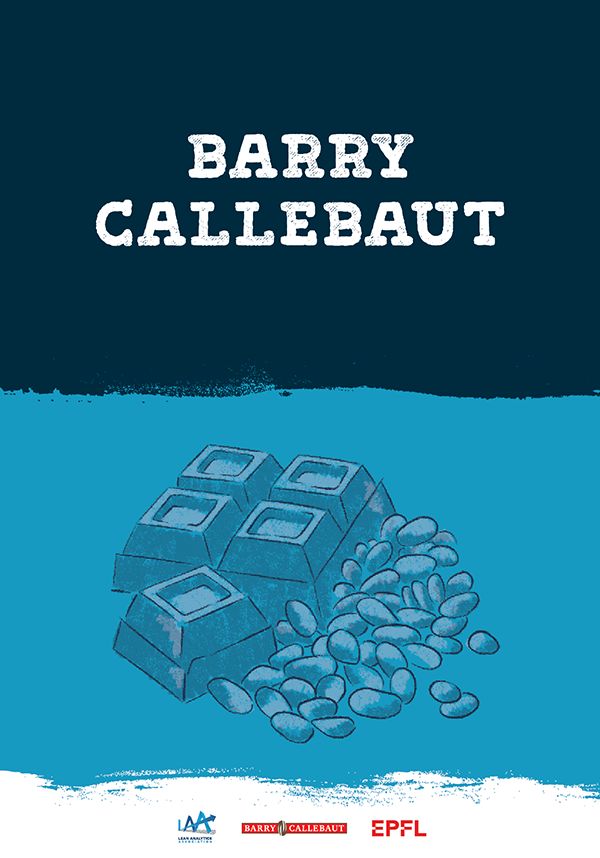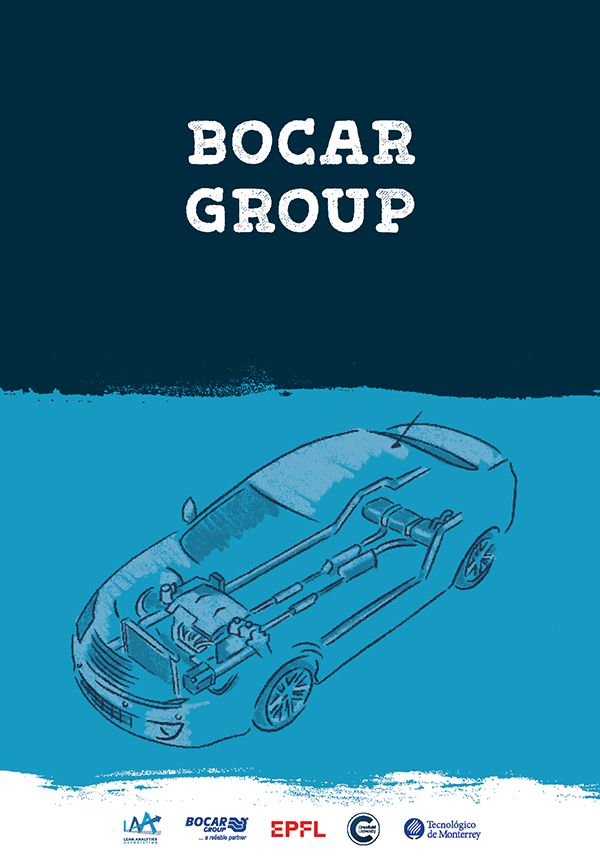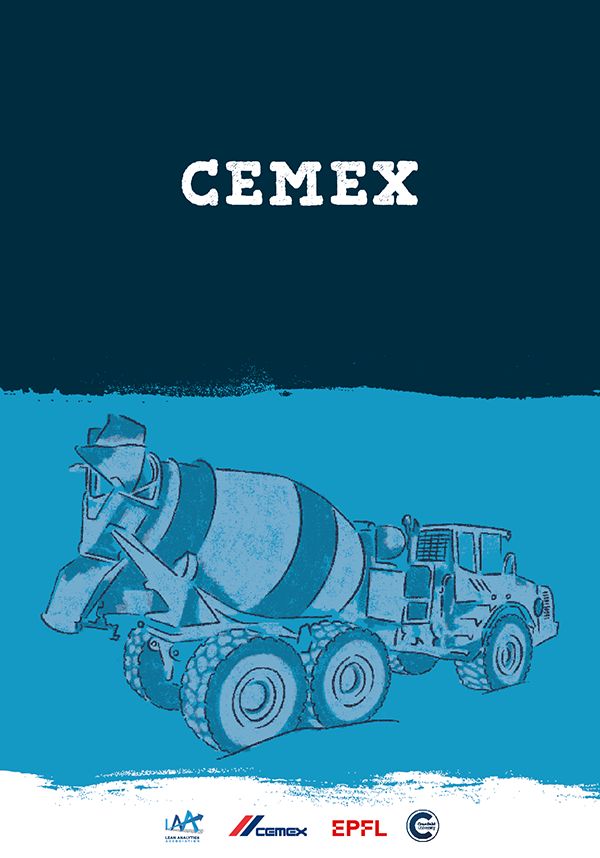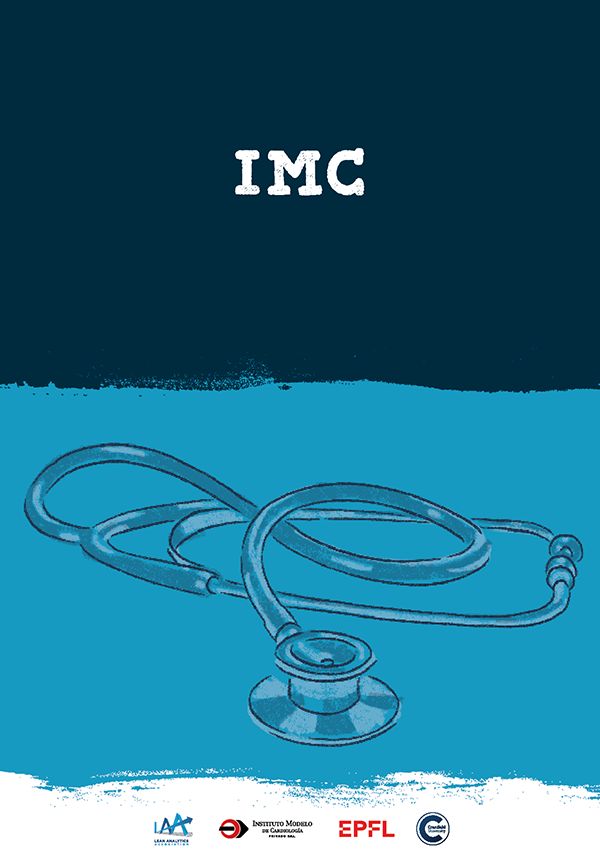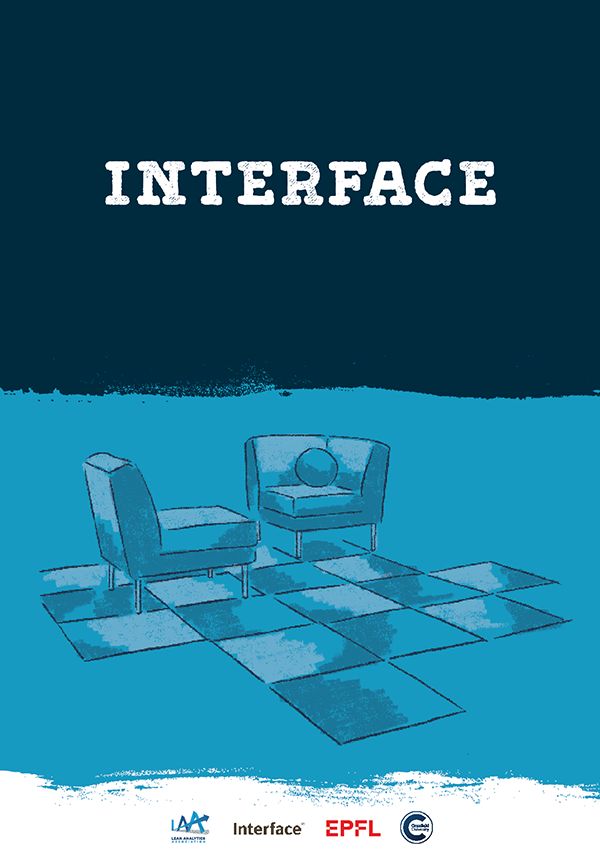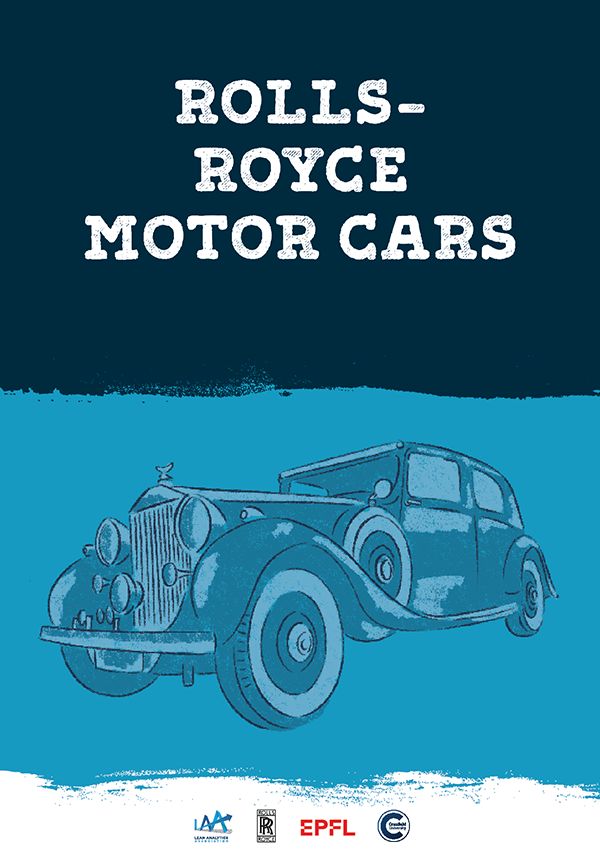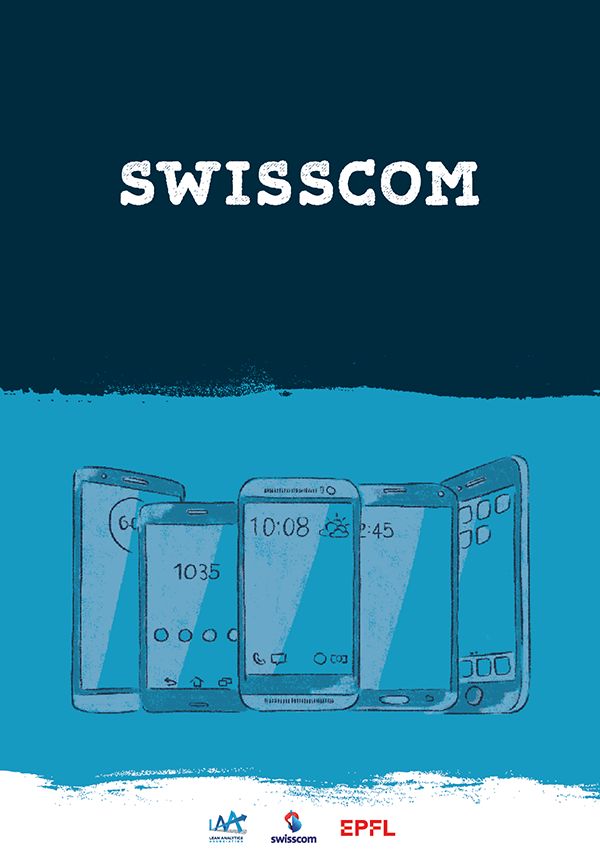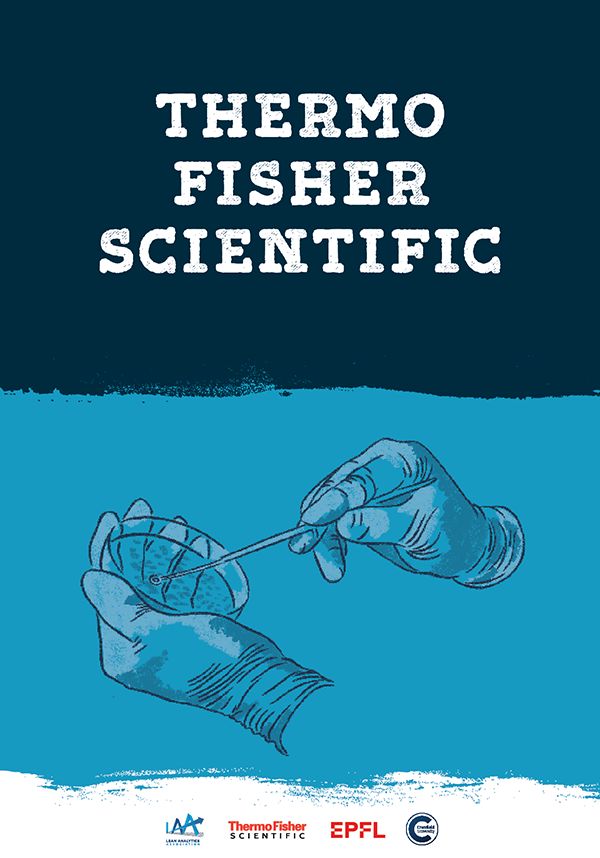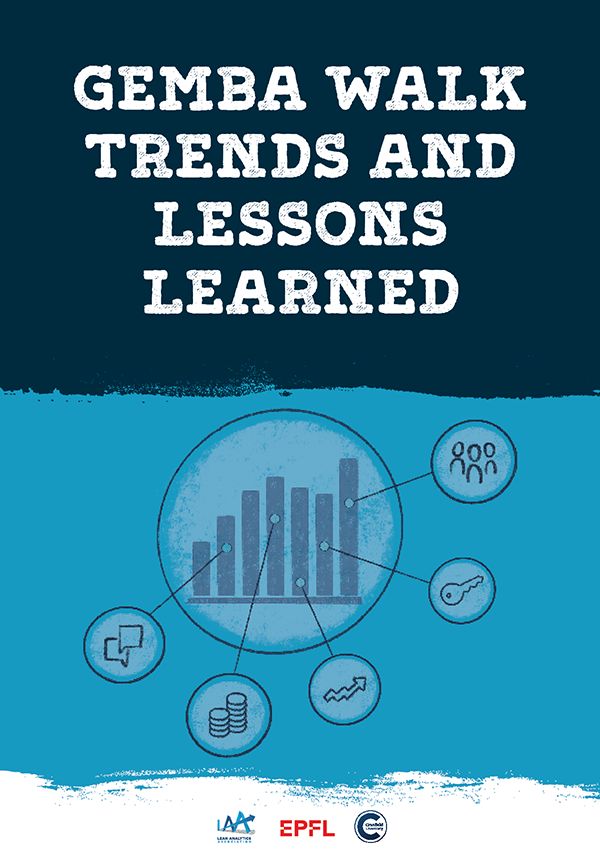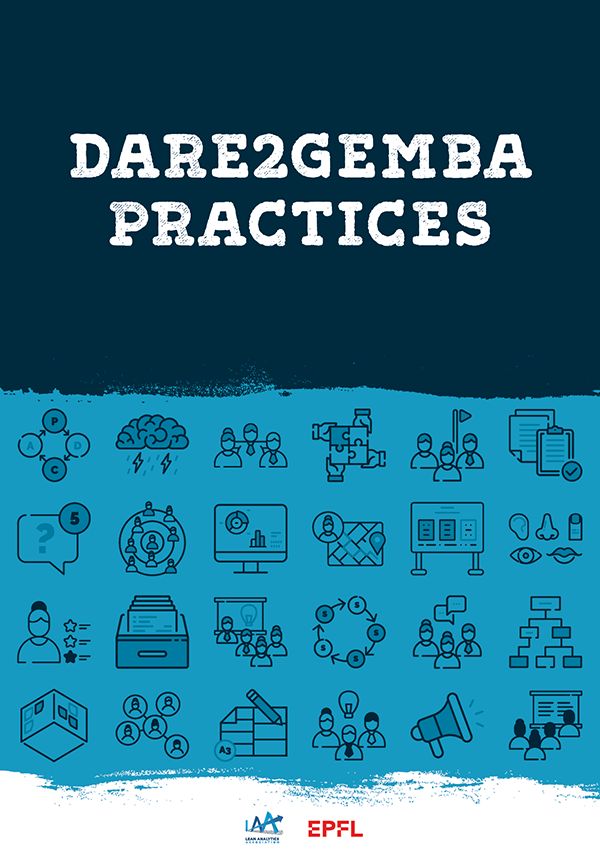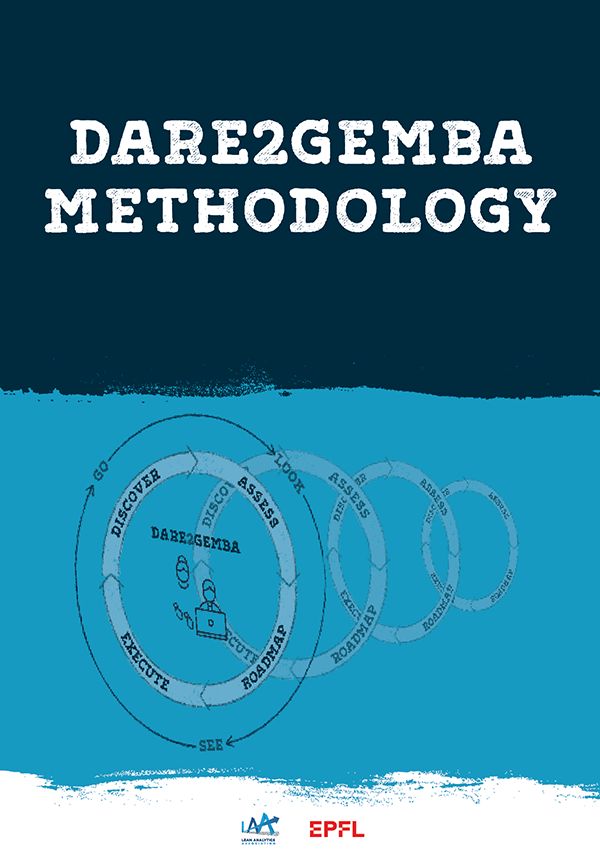The Dare To Gemba Walk book integrates nine case studies from different organizations, the findings of a global survey and the DARE2GEMBA Methodology to inspire leaders to kick-off their Gemba Walks and solve problems collaboratively!
Cases

Introduction
This first chapter engages readers to understand key definitions about lean, its origins, and its evolution. It provides insights about the strategic relevance of performing Gemba Walks as a key enabler for Kaizen and Kairo towards collaborative problem-solving. Kaizen focuses on fostering a growth mindset in leaders and employees enabling them to reach their true individual potential and Kairo fosters the development of a continuous improvement culture to deliver value to customers, employees, and society.
This chapter also introduces the Lean Transformation Model proposed by LAA consisting of 4 building blocks and 12 enablers used as the framework to discover and document the best practices of the 9 Gemba Walk cases included in the book: Barry Callebaut (France), Rolls Royce cars (UK), Swisscom (Switzerland), CEMEX (Colombia), Airbus (Spain), IMC (Argentina), Bocar (Mexico), Interface (USA) and Thermofisher (Lithuania).
Case 1: Airbus Defence & Space
Airbus Defence and Space is part of the Airbus Group, a world-leading defense aircraft provider. This case analyzes the best practices of using Gemba Walks as one of the Lean Leadership principles, embedded in the company’s lean strategy. Their lean journey began in 2011 with the desire to improve the management’s and associates’ capabilities. In 2013, Gemba Walks were implemented as a way for managers to become aware of the problems their workforce identifies, and to accelerate the top and middle management involvement. Gemba Walks are now well-defined and rolled out across the company with the support of lean experts and change agents, achieving remarkably high involvement levels and empowering employees to implement improvement actions.
Case 2: Barry Callebaut
This chapter analyzes the Gemba Walk lean practice deployed at Barry Callebaut, the world’s leading manufacturer of high-quality chocolate and cocoa products. Their lean journey started at the production plant in Louviers, France in 2011. For the past 5 years, the practice of “Going to Gemba” has been considered a critical collaboration practice embedded in their daily routine to discover and solve problems where the action takes place.
Case 3: Bocar Group
The Bocar Group manufactures aluminum and plastic components for the automobile industry and it is headquartered in Mexico City. Bocar started its lean journey in 2008 with a group of lean experts assisted by external consultants. That year, employees and managers started to follow a lean training with a strategic plan to change the employees’ mindset and culture. Inspired by the Ohno Cycle approach, Gemba Walk activities focused on revising a specific process and observing value stream flows, while at the same time identifying types of waste and committing employees to sharing inputs and implementing improvement actions.
Case 4: CEMEX
CEMEX is a global building materials supplier with over 112 years of experience, having its headquarters in Monterrey, Mexico. The purpose of this case, based on the experiences from a cement plant in Colombia, is to provide a global view of how CEMEX’s managers carry out GEMBA WALKS in order to listen to and help their employees whenever problems arise. CEMEX started its lean journey in 2013 with the support of external consultants, with a vision to run the safest and most efficient cement operations company worldwide. Gemba walks were standardized in 2016 and they are nowadays conducted by top managers with a target of three walks per week. As a practice for continuous problem-solving, it is supported by an internal APP to collect ideas from all employees anytime, anywhere.
Case 5: Instituto Modelo de Cardiología
The Instituto Modelo de Cardiología Privado S.L.R. (IMC) is an Argentinean institute based in Córdoba, one of the pioneer institutions applying lean in the healthcare sector in South America. The initiative started in 2012, after having learnt about lean implementation in hospitals in the U.S. and working with Lean and Six Sigma methodologies. Their Lean Journey started at the non-medical areas with a high impact on the patients’ experience. Today, in IMC, Gemba Walks are conducted in most of the hospital’s departments, focusing on those with the most significant potential for improvement. Gemba Walks are already part of the hospital’s culture of continuous improvement and a way to propose and validate improvement activities in collaboration with employees, hospital providers and patients.
Case 6: Interface
Interface is a world-leading modular carpet manufacturer and pioneer in the practical application of sustainability with headquarters in Atlanta, USA. Since 2015, the Gemba Walk training and lean practices have been progressively adopted by different departments within Interface, and Gemba lean techniques have been successfully applied in the functional areas of product design, marketing, and the testing laboratory. During the GEMBA WALKS, leaders follow the value stream and identify knowledge gaps. This practice has been very useful in encouraging cross-functional collaboration, gaining insights about the process and enabling interdepartmental connections.
Case 7: Rolls-Royce Motor Cars
Rolls-Royce Motor Cars is a world-leading luxury automotive company, part of the BMW Group. This chapter shares Rolls-Royce Motor Cars’ best practices of carrying out Gemba walks for leaders to lead performance improvement within the company. In 2015, the company accelerated its lean journey and started getting its leaders involved, training them in how to perform Gemba walks for improvement purposes and how to manage standard Process Boards. The Go-Look-See practice is used to actively gather information and ideas from employees, identify the root-cause problems on the shop floor and align on an action plan with clear assigned responsibilities and deadlines.
Case 8: Swisscom
This chapter analyzes the lean management practices of the Gemba Walk implementation at Swisscom, awarded with the Lean 2020 Successful Practice Award from the St. Gallen University. Their lean journey started in 2010. They count on a central team that focuses on coaching Lean Masters & Lean Experts to transform their organizational culture. The Lean Team developed a Lean Academy in order to build internal capabilities concerning the Gemba Walks implementation. Their “Touchpoint Experience” is the most standardized “Gemba walk” related practice across their organization.
Case 9: Thermo Fischer Scientific
Thermo Fisher Scientific is located in Vilnius, Lithuania with its Biosciences Center of Excellence. They started their Lean Journey in 2007 in collaboration with external consultants. In 2013, they integrated the continuous improvement philosophy into the company’s strategy with a clear vision and strong top management commitment. Their Practical Process Improvement Business System empowers and engages employees to provide ideas 24/7. Thermo Fisher Scientific received the Shingo Award recognizing their efforts and impact applying lean to achieve Operational Excellence.

Trends, Practices and Dare2Gemba Methodologies

Gemba Walk Trends & Lessons
To enrich the research outcomes from the nine industrial cases, an online survey was carried out to gather the lessons learned from Gemba professionals worldwide. The final research covers participants from 5 continents, representing 60 organizations from 18 industries. “Going to the Gemba” should be considered as one key enabling lean practice. It aims to understand the problems and the root causes, while actively listening to the employees, doing empathy maps, measuring KPIs, tracking improvements, proposing A3 projects and celebrating success, among other. Based on the findings, Gemba Walks have become one of the most valued lean practices.
Practices
This chapter consolidates forty lean practices observed at the nine different cases of this book that enabled their Gemba Walk implementation. High level insights are provided for each practice, explaining how they support the Gemba Walks and which are the key activities suggested for leaders, the facilitators and the employees. It is suggested that every organization assesses their baseline of the implementation of these practices and prioritizes their implementation before launching the Gemba Walks.
Methodology
This last chapter represents the “cutting edge” result of the two-year collaborative research project pursued by the Lean Analytics Association. It proposes the DARE2GEMBA methodology to carry out successful Gemba Walks within any organization. It enables any team leader to empathize with its customers and employees, assess best practices and behaviors, and support the definition and execution of a Gemba Walk process to engage and empower leaders and employees for collaborative problem-solving.

Explore our shop

DARE2GEMBA
BOOK
Get the book resulting from two years of collaborative research with 9 companies.

TOOLKIT
Get the book, templates and 2 hrs master class that will help you build a Roadmap and execute successful Gemba Walks.

Become a
facilitator
Get certified as a facilitator to conduct Gemba Walks in your organization or as a consultant.











